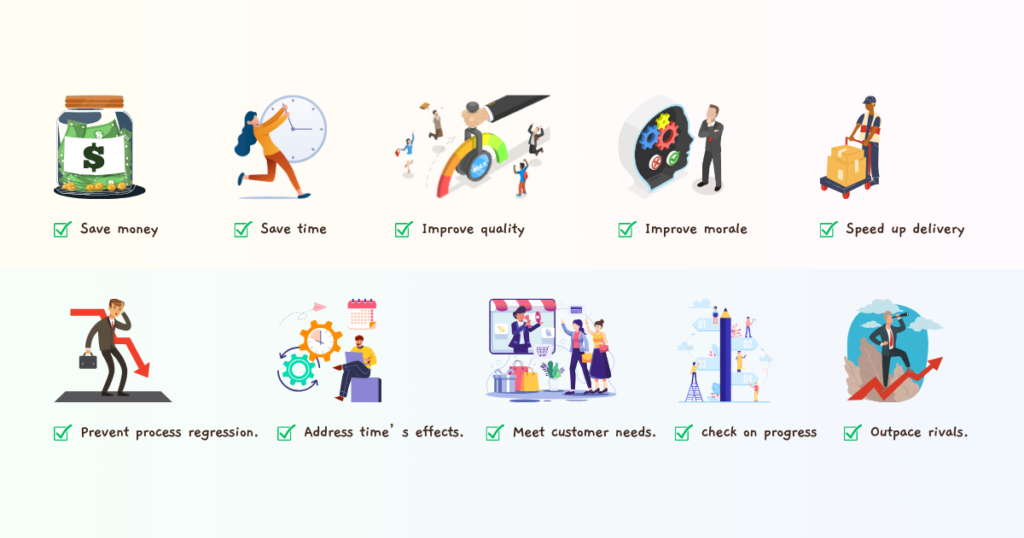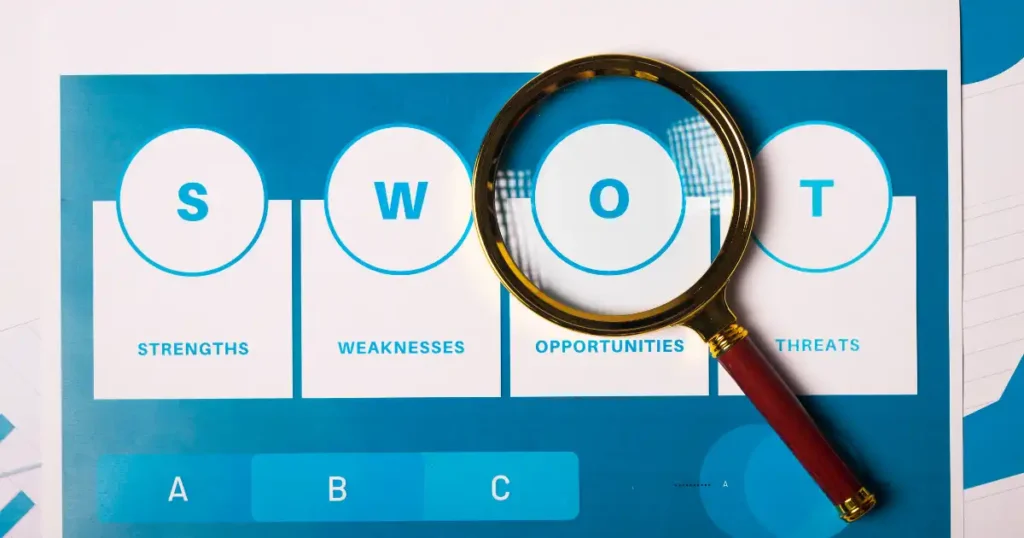Table of Contents
It is worth stating, right out of the gate, that process improvement is NOT a one-off effort. It is indeed very much something that has to be continually pursued and delivered. It exists very much within the world of continuous improvement and can be treated as something operating alongside or central for continuous improvement. Either way, you must continually evaluate and improve your business processes for many reasons and many benefits.
Let’s tackle that sentence before we explore why you must continually evaluate and improve business processes. To improve something you must understand it, see it and grasp how it is currently operating. You cannot continually improve processes if you don’t know how they are working if you cannot graphically see their workflows or have data to understand their performance. In order to improve your business processes, you must first evaluate them.
Evaluating your business processes

To evaluate your business process, you need to conduct the following activities:
- Process map them. Using an approach such as a flowchart, swim lane or workflow diagram, map out what your process looks like and how it operates. This will include adding in all activities, steps, handoffs, decision points, departments involved etc. It will include the information and data that is flowing through the process, those inputting the raw materials and those receiving the completed outputs.
- Add more insight to your process maps. Now you have mapped your processes, it is time to add more insight. This insight can come in the shape of where issues are arising, and what types of issues and errors you are seeing. You can highlight your rework loops and bottlenecks, your most troublesome hot spots, and the parts of the process where you are spending too much time waiting for others to complete their activities.
- Look at the data. All processes produce data in some format, whether delivered through a system or by default. This data will show the performance of the process, the operation within which it exists and the outputs that come from it. All of this is vital to being able to evaluate the process.
- Speak more widely. Hold conversations with those who work in the process and interested stakeholders to understand their thoughts and concerns around the process. Sometimes there can be things happening within processes that cannot be seen on process maps (feelings, concerns, thoughts, potential future problems, risks etc.) This information can be gathered from these conversations.
You don’t need to do this work every time you seek to improve a process, but do need to keep these options open and live. For the data, build dashboards which can inform you constantly on performance and impact of changes. For process maps, keep these live and up to date. This includes updating them every time a change happens. By doing this, the information you need to evaluate your business process is always ready and available when needed.
Join our Continuous Improvement Training Program
Improving your business processes

From the evaluation, you can establish what changes and improvements are required for your business processes. This can include launching projects to reduce waste, bottlenecks and rework. Projects to improve the performance of those delivering the processes, the people and the practices. You can shift your processes from being manual in nature to more automated, whether through a new system or automated solution, AI or software. You can work to standardize or globalize your processes, streamline them, make them Leaner, produce better data etc. Whatever you are seeking to do and deliver to improve your business processes, there are a substantial number of benefits to doing this.
Why you must continually evaluate and improve business processes

It is vitally important to continually evaluate and improve your business processes for the following reasons:
- To save money. Processes which operate quicker and more effectively cost less to run. This is because the “cost of doing business” falls per unit produced, per hour worked etc.
- To save time. With less waste, less risk of errors and less time spent doing non-value-adding activities, you can save time. This is time that can ultimately be reinvested back into the business to improve the quality of outputs and the amount of work produced. The saving of time can have a good ripple effect across the business.
- To improve quality. More time and money saved means more can be reinvested into the quality of the operations.
- To improve colleague morale. Colleagues like to run processes which are high in value-adding activities, which are not plagued with waste or unnecessary activities. Indeed, those colleagues working in highly efficient and valuing adding processes are the happiest type of employees.
- To speed up delivery. Continually improving means you can baseline performance today and see where you are/want to be in the future. You can run projects to shave off X amount of time with each process improvement, seeking to get products and services to clients and customers quicker and quicker, without compromising on quality.
- To ensure improved processes don’t go backwards. One-off process improvement can be great, seeing all of the key metrics around that process improve once the project has been completed. However, over time, the process begins to stagnate, take on more waste and slow down. If the process was continually improved, this stagnation would not have happened.
- To respond to the impact of time. Over time, processes can take on a range of new steps, activities, people, decisions etc. Processes built a number of years ago were once fit for purpose but with changing people, demands and technologies, they no longer are. Continual process improvement can ensure that processes evolve with time, evolve with the innovations that come to the market and don’t take on waste.
- To adapt to changing customer wants & needs. Equally, time can see a shift in the needs and expectations of customers. What was once a highlight desirable and valued product or service no longer is. Continually improving the process means that the organization can adapt to shifting customer needs quickly, moving the process on to deliver different outputs.
- To check on progress. The continual evaluation is also critical to ensure that new problems and risks are addressed quickly. As we have mentioned, time moving forward leads to new customer expectations and potential for waste and challenges. Equally, new risks can arise, new difficulties can embed themselves into the process and new approaches are needed.
- To keep ahead of the competition. Becoming a leaner, more efficient, more effective and more agile organization means that you can respond to challenges much quicker. You can adapt to new technologies, new ways of working and new demands from customers. This will put you ahead of your competitors who may be struggling to respond quickly like you now can, because you have continually improved.
Conclusion
To wrap up this article, it is important to stress the key elements here. To continually evaluate your business processes you need data to understand what is occurring, process maps to identify why it is occurring and an understood and defined approach for how to make your improvements and changes. When you are seeking to continually improve your processes you need to get others onboard, be clear on the benefits of taking this approach and seek to show the why.







